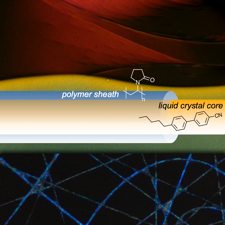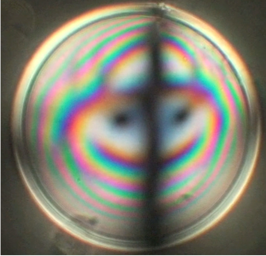31/03/13 13:36
Our
Perspective article in
J. Polym. Sci. B: Polymer Physics on the science and - in particular - the application potential of electrospun polymer fibers functionalized by liquid crystals is now on-line.
You can download the paper without any subscription here. (Perspective and Review articles are available for free download from
J. Poly. Sci. B: Polym. Phys.) It briefly introduces liquid crystals to the general polymer audience, giving a particular emphasis on the response to the strong confinement that takes place when introducing liquid crystals in core-sheath fibers, and then focuses mainly on the application possibilities of this new class of liquid crystal composite. After reviewing the current state of the art in the field of liquid crystal electrospinning and a few selected other attractive examples of composite fiber electrospinning, we discuss some interesting new developments in the general liquid crystal research field that may be very beneficial to connect with electrospinning. These are gas sensing with liquid crystals, mechanical sensing with liquid crystals, and mechanoelectrical power conversion using flexoelectric liquid crystals. Finally, the paper is rounded up with an overview of the application possibilities that can be envisaged by considering a cross fertilization of the previously discussed activities. These are goals that we are currently working towards in our group, and we are very happy to collaborate with anyone interested that would like to provide complementary expertise. Alternatively, if you would first like to simply explore the possibilities of liquid crystal electrospinning in your own lab, I will be more than happy to provide advice on how to set up your own equipment. Please
contact us if you would like to know more.
Tags: publications
06/03/13 13:00
Our paper in the
Philosophical Transactions of the Royal Society A (the longest running journal dedicated to science, established in 1665, with contributing authors including Isaac Newton, James Clerk Maxwell, Michael Faraday and Charles Darwin) on defect configurations in nematic and smectic liquid crystal shells is published.
You can download the paper here (free access until 31st of March). In the paper we give a brief overview to the science and possible applications of liquid crystalline shells and how they are currently produced using an elegant microfluidic technique, and we then concentrate on our own contributions that focus on the nematic-smectic A transition and the smectic A-smectic-C transition in the shells. New additions in this paper includes a description of how the director field pattern in a planar-aligned SmA shell rearranges in response to a rotation of the shell with respect to gravity, how a negative-signed defect can be produced in a nematic shell by seeding more positive-signed defects within the shell than required (and allowed, if they would not be compensated by negative defects) by topology, and how the SmA-SmC transition appears in a homeotropic-aligned shell (the picture to the left is from a SmC shell of this type).
Tags: publications



